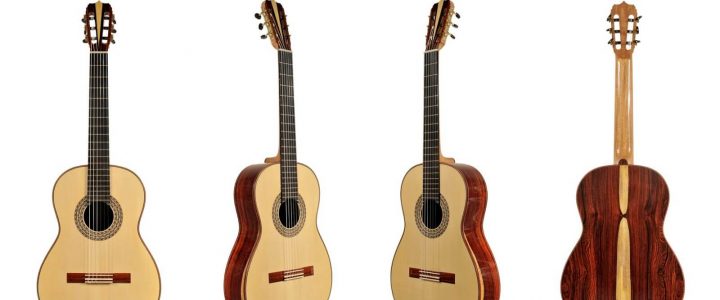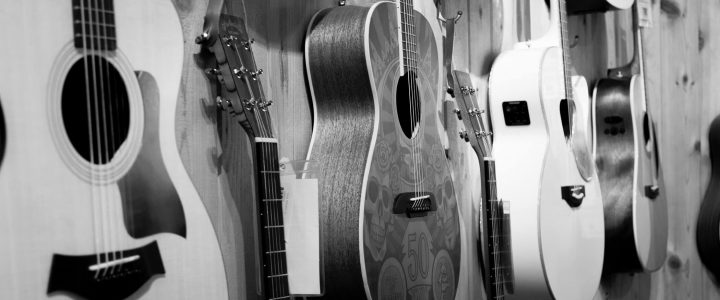Welcome to the captivating realm of Bob Hooper, where the melodic tones of Spanish guitar types exceed boundaries, weaving musical wonders that span Flamenco, Classical, and an array of diverse genres. For those curious minds pondering, “What is a Spanish guitar?” or delving into the intricacies of various Spanish guitar types, you’ve found your sanctuary. This is more than just a musical journey; it’s an odyssey guided by the expertise of Bob Hooper, an esteemed Spanish guitarist.
In this mesmerizing world, the Spanish guitar type isn’t merely an instrument; it’s a conduit for emotions, an echo of centuries-old traditions, and a vessel of artistic expression. Each strum and pluck resonates with the passionate heritage of Flamenco, carrying the weight of history in every note. It’s the instrument of choice for Flamenco virtuosos, exuding a soul-stirring magic that captivates hearts and transports listeners to sun-kissed Spanish landscapes.
But the Spanish guitar is more than Flamenco alone. It effortlessly transitions into the refined elegance of Classical compositions, embracing the complexities of melodic symphonies and intricate harmonies. The same strings that evoke the enthusiasm of Flamenco can also dance gracefully to the compositions of great Classical masters, showcasing the versatility and allure of this instrument.
Beyond the boundaries of Flamenco and Classical, the Spanish guitar ventures into a myriad of musical genres, exploring the depths of Latin rhythms, the soulful strains of Blues, and the foot-tapping beats of Jazz. With Bob Hooper as your guide, this journey becomes an adventure, where the Spanish guitar becomes a versatile companion, adapting to the nuances of each genre with finesse and grace.
So, whether you’re a curious soul wondering about the essence of Spanish guitar types or an aspiring musician eager to explore its diverse facets, this is the place to be. Embark on this musical expedition with Bob Hooper, where the Spanish guitar becomes more than an instrument; it becomes a gateway to a world of endless musical possibilities. Let the strings resonate, and let the enchantment of Flamenco and the allure of Classical compositions usher you into a realm where every strum tells a story, and every chord paints an emotion. Welcome to the enchanting world where Bob Hooper’s expertise turns your musical dreams into melodious realities.
What is a Spanish Guitar?
A Spanish guitar, typically referred to as a classical guitar, is a versatile musical instrument with a rich history and cultural significance. Originating in Spain, this elegant instrument features nylon strings and a distinctive warm tone that sets it apart from other guitars. Spanish guitars have become synonymous with genres like Flamenco and Classical music, captivating audiences with their musical tunes and intricate fingerpicking techniques.
Types of Spanish Guitars
In the realm of Spanish guitars, there are various types tailored to different musical styles. Understanding these Spanish guitar types is essential for choosing the perfect instrument to suit your preferences and aspirations. Whether you are captivated by the passionate rhythms of Flamenco or the timeless elegance of Classical music, selecting the right Spanish guitar type is crucial.
Flamenco Guitars:
Flamenco guitars, often regarded as the heartbeats of passionate Andalusian music, are meticulously designed to capture the fiery spirit of Flamenco. They feature a lighter build and a distinctive percussive quality, allowing performers to create rapid, rhythmic strums that define Flamenco’s vibrant energy. The soundboard, made of cypress or spruce, accentuates the sharp, crisp tones essential for Flamenco compositions. The neck is shorter, enabling swift finger movements, essential for intricate Flamenco techniques. If your heart beats in rhythm with Flamenco’s passionate pulse, a Flamenco guitar is your ideal companion.
Classical Guitars:
Classical guitars, also known as Concert guitars, epitomize elegance and sophistication. Crafted with meticulous precision, these guitars produce a warm, balanced tone, making them ideal for Classical music compositions. The soundboard, typically made of cedar or spruce, resonates with deep, harmonious notes, creating a melodic allure. Classical guitars boast nylon strings, providing a smooth texture under the fingertips facilitating intricate fingerpicking techniques. If you’re captivated by the timeless compositions of maestros like Bach and Mozart, a Classical guitar is your gateway to their intricate world.
Flamenco Negra Guitars:
Flamenco Negra guitars are an intriguing fusion of Flamenco’s spirited essence and Classical guitar’s finesse. These guitars feature a deeper body, resembling the Classical guitar’s build, yet retain Flamenco’s signature percussive character. The soundboard is often made from spruce, enhancing the projection of sound. Flamenco Negra guitars offer a balance between Flamenco’s rhythmic brilliance and Classical music’s melodic depth, making them a choice for musicians who appreciate both styles.
Flamenco Blanca Guitars:
Flamenco Blanca guitars, in contrast, maintain the traditional Flamenco essence in its purest form. Crafted from cypress wood, these guitars produce bright, sharp tones, echoing the raw, unbridled spirit of Flamenco. Their characteristic crispness and responsiveness to rapid strumming techniques make them indispensable for traditional Flamenco performances. If your soul resonates with the soul-stirring beats of Flamenco, a Flamenco Blanca guitar is your instrument of choice.
Understanding these Spanish guitar types is not merely a matter of technicality but an exploration of musical identity. Each type carries within its strings a unique heritage, a cultural narrative that enriches your musical expression. Whether you’re drawn to the passionate rhythms of Flamenco or the timeless elegance of Classical music, selecting the right Spanish guitar type is an intimate decision that aligns your artistry with the soul of the instrument. So, as you embark on your musical journey, let the nuances of these guitars guide you, shaping not just your melodies but also your musical legacy.
Bob Hooper – Spanish Guitarist
At the heart of this musical journey is Bob Hooper, a passionate and dedicated Spanish guitarist whose expertise goes beyond boundaries. Bob Hooper offers a range of services that showcase the spirit of Flamenco guitar, blending creativity and tradition seamlessly. With over two decades of experience, Bob Hooper is not just an instructor or performer; he is a beacon of passion, authenticity, and dedication in the world of Flamenco guitar.
To Conclude, In the enchanting world of Spanish guitars, Bob Hooper stands as a beacon of passion, expertise, and dedication. His mastery of Flamenco guitar and other genres, coupled with his personalized approach and flexible learning options, make him the ideal mentor for anyone aspiring to explore the realm of Spanish guitars. So, whether you dream of becoming a Flamenco virtuoso, wish to add a touch of elegance to your special events, or simply desire to learn the art of guitar from a true maestro, Bob Hooper is your gateway to a musical journey that promises unforgettable moments and endless inspiration.
Ready to unleash your inner guitar maestro? Reach out to Bob Hooper at 07786 45 49 50 and embark on a transformative musical adventure. Let the strings of different Spanish guitar types resonate with your passion, creating melodies that echo with the timeless magic of Flamenco, Classical, and beyond. Bob Hooper awaits to guide you, inspire you, and help you craft your musical legacy, one chord at a time.


